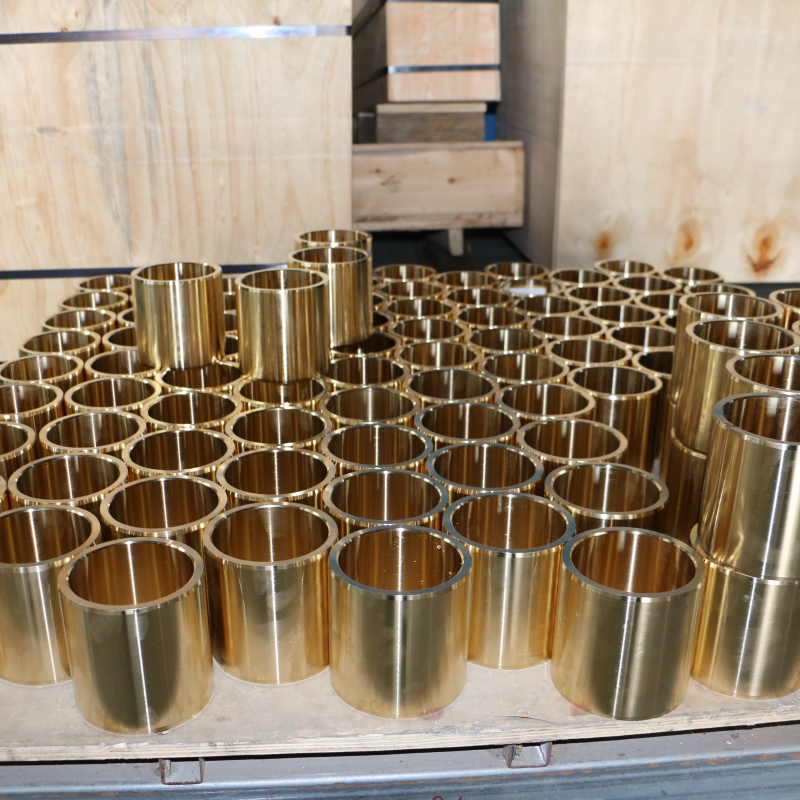Aluminum bushings:
Material: made of aluminum or aluminum alloy, aluminum is a lightweight metal with excellent corrosion resistance and thermal conductivity.
Light weight: Aluminum has a lower density of about 2.7 g/cm³, so aluminum bushings are lighter than copper bushings.
Wear resistance: wear resistance is relatively poor, especially in high-speed, high-load environment easy to wear.
Corrosion resistance: Aluminum has good corrosion resistance, especially when exposed to air to form a protective layer of aluminum oxide to prevent further corrosion.
Thermal Conductivity: Aluminum has good thermal conductivity, but is slightly lower than copper.
Strength and hardness: Aluminum has relatively low strength, and although strength can be increased through alloying, it is generally not suitable for high load, high wear environments.
Application Scenarios: It is mainly used in applications with high weight requirements, such as aerospace, automotive industry, and light machinery. In these areas, aluminum bushings can reduce the overall weight of the equipment and improve fuel efficiency or the lightness of the equipment.
Suitable for low to medium loads, especially in scenarios where weight reduction and corrosion resistance are required.

Copper bushings:
Material: made of copper or copper alloys, common copper alloys include brass, bronze, etc. Copper has excellent electrical and thermal conductivity.
Density: Copper has a high density of about 8.9 g/cm³, heavier than aluminum, so copper bushings are more suitable for applications that require high strength and wear resistance.
Wear resistance: Excellent wear resistance, especially suitable for applications with high friction, such as bearings and sliding parts.
Corrosion resistance: Copper also has a certain degree of corrosion resistance, but in some environments (such as humid or acidic environment) may occur oxidation or rust.
Thermal and electrical conductivity: Copper has excellent thermal and electrical conductivity, much better than aluminum, so copper bushings are often used in applications that require high electrical conductivity or high heat dissipation.
Strength and hardness: copper bushings have high strength and hardness, especially bronze bushings, which have excellent wear resistance and are suitable for high load, frequent friction occasions.
Application Scenario: Widely used in heavy machinery, mining equipment, metallurgical equipment and other occasions that require high wear resistance and strength.
Commonly used in bearings, gears, pumps, valves and other high load and high friction components, due to its excellent wear resistance and electrical conductivity, copper bushings are commonly used in equipment requiring high mechanical properties and electrical conductivity.
Summary:
Aluminum bushings are suitable for light loads, need to reduce the weight of the occasion, has good corrosion resistance, but wear resistance is poor.
Copper bushings are suitable for high loads, applications requiring high strength and wear resistance, and excel in electrical and thermal conductivity, but are heavy and costly.
| Previous:What is the difference between plastic and copper alloys? | Next:What is the difference between a benchtop spectrometer and a portable spectrometer? |




 Copyright © 2022
Copyright © 2022